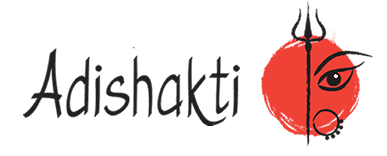Breathing is not just about a simple inhale-exhale. A calm and constructive mind, more energy and receptivity, and overall well being are just an inhale (and an exhale) away.
Given the modern day lifestyle, many of us might not be aware of whether we are under-breathing or over-breathing or breathing through one nostril alone at the expense of the other. On a given day, we may wake up to a headache, experience a ‘foggy brain’, lack of energy, muscle fatigue, stressed and anxious. We may suffer from a low level of stress throughout the day even without understanding the why of it. What we don’t realize at these times is that our mind, body, emotions and breath are intimately connected and can influence each other. Essentially, our breathing is considered to be influenced by our thoughts, and our thoughts and physiological state can be influenced by our breath.
The dynamics of breath and balance
Balancing breath can be loosely described as balancing the ida and pingala nadi and awakening the sushumna. The right nostril is fired by the pingala nadi which is characterized as masculine, expansive, activity oriented. It is symbolized by the sun, expressed in physical and mental activity, manifests in our logical thinking and is considered to influence the left brain activity. The left nostril is fired by the ida nadi which is characterized as feminine and introspective. It is symbolized by the moon, expressed in self reflection, manifested in intuitive and creative aspects, receptive by nature and is considered to influence the right brain activity. The western worldview terms this polarity at the level of the body and mind, as a response of the sympathetic and parasympathetic nervous system. Finally, when the nostrils flow equally, the energy is associated with psychological balance and a state of quiet self-observation or an expansion of the consciousness.
Thus, when pingala is active, the breath flows more prominently through the right nostril, and when ida is active, the breath flows more freely through the left. When the central nadi (sushumna) is awakened, the two nostrils flow equally. If we were to explore, we can observe that sometimes one nostril is completely blocked while the other is open, and at other times the difference in dominance is less obvious. Or we may find that one nostril remains dominant for most or all of the day. In a healthy person, these shifts between the two nostrils happen in a unique equanimous way. While one needn’t be bothered about the natural process of these shifts, the problem arises when these trickle down to physical, mental and emotional health issues. Conscious, relaxed breathing can be the antidote to this, and the secret lies in balancing the inhalation and exhalation between the two nostrils.
Self exploration of breath – Know your breath
- Measure your nostril dominance at various times of the day. You can even check it at regular intervals throughout an entire day.
- Do certain activities seem more effective or pleasant or irritable when a particular nostril is open?
- Does nostril dominance seem to have a direct impact on your mood?
- Does deep breathing or alternate nose breathing or any breathwork exercise that seek to balance the two nadis, alter the dominant nostril or have an impact on your general physical and mental state?
By becoming aware of these cycles, we can know when we are acting in harmony with them, when we are struggling against their currents, and how we can change them to suit a particular situation. By becoming aware of these cycles, we can know when to hit the reset/pause/stop button in our life to handle our physical, mental and emotional state better.





